
By Mx Kris Vyas-Myall
Of the three channels on British television, the one that averages the best quality of output is easily BBC2. Not that all their output is entirely to my taste. For every Disco 2 and Laugh-In there is a High Chapparal or Pot Black
However, one section I try not to miss is their World Cinema slot. Whilst other shut-ins on a Friday Night are watching Manhunt or It’s A Knockout, I enjoy settling down to discover what gems from around the world I might not otherwise see.
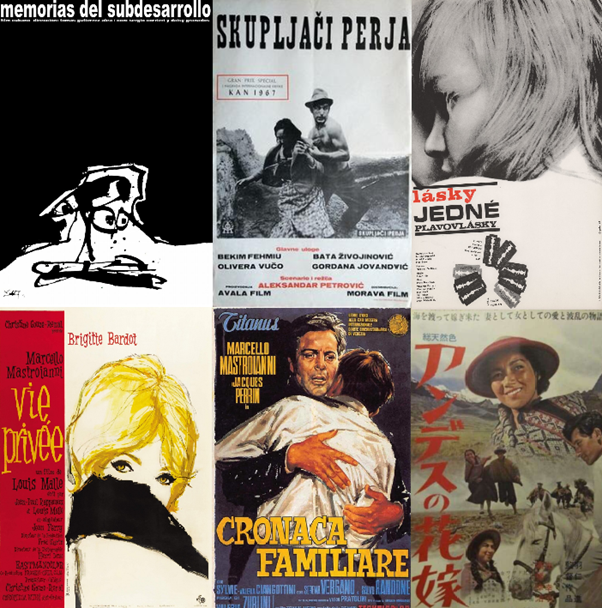
Some of the films in the World Cinema slot recently. Clockwise from top left: Memories of Under-Development (1968); Happy Gypsies (1967); Loves of a Blonde (1965); Bride of the Andes (1966); Family Diary (1962); A Very Private Affair (1962).
Now there is a definite bias in the movie selection. Over the last two years, by my count, over half the films have been French and another third are from elsewhere in Europe (notably a heavy proportion from Italy and Eastern Europe). There have only been two films from Latin America (one from Cuba, another Mexico), two from Asia (both from Japan) and nothing from Africa (unless you count a French film shot in Tunisia).
They are also overwhelmingly within New Wave or Neorealist style with multiple films by directors like Truffaut and Visconti. Very few are broad comedy, crime, musical or melodrama, with no sight of pieces such as Les Grandes Vacances or Lemonade Joe. You are much more likely to see a slow black and white shot of an egg being cracked than someone cracking a joke.
As such, there is not a huge amount of fantastical content involved, even their love of Italian and French cinema could not give us Alphaville or The Tenth Victim (although The Batman-esque Judex a couple of years ago was a nice surprise). However, I do want to review two that have come on recently that are of possible interest to the Journey audience. One from Czechoslovakia and an Experimental film from here in Britain.
The Stolen Airship
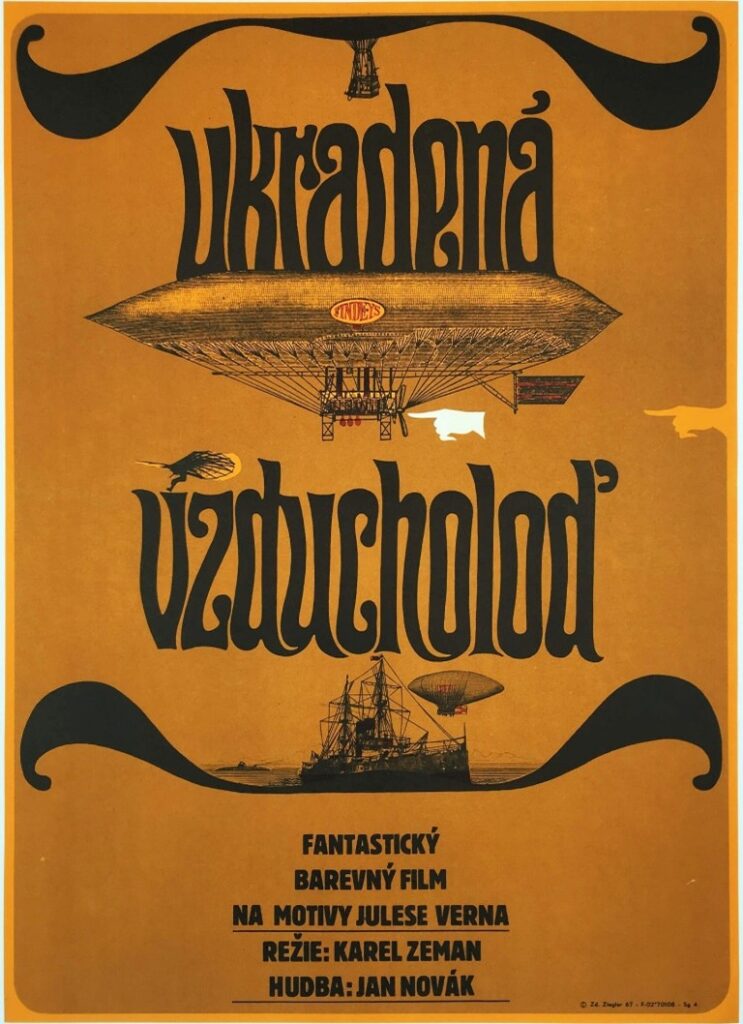
Much like in many SFnal films of earlier in the the 60s it is inspired by Jules Verne but takes vast liberties with the source material. I can see the influence of a lot of his books but not one I would class as the primary, probably The Mysterious Island is the closest.
It opens with a journey through the history of man, from cavemen with mammoths to 19th century Parisians, told through various animated art styles. But instead of optimism it is peppered with anger at the young, such as a flowerpot falling on a Roman Emperor’s head or a tryst between a squire and a princess. In a continued act of surrealism, we switch to live action against animated backgrounds, where a group of youths are put on trial.
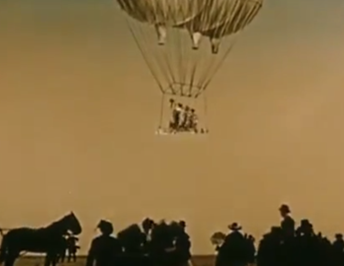
Onlookers watch as cancan dancers perform on a balloon suspended platform. Well if you Can-Can why Not-Not?
This mixed media is used throughout the film which, combined with the sepia tone, create this whole unworldly feel. As if these are pages in a storybook, similar to what is seen in Karel Zeman other films like The Jester’s Tale or Baron Munchausen.
The main story concerns this group of young mischief makers, starting in 19th Century Prague. At a ballooning exhibition they are offered a free ride on a new airship. It has steam-powered direction along with a completely fireproof gas, revolutionising flight. When paying customers buy tickets the proprietor, Finday, tries to kick the freeloaders out, so they take off in the airship themselves.

The titular airship, in mid theft.
The press has a field day and whip-up riots until they discover one of the children is the son of a procurator. Things then completely change. Punishing the poor and printing pictures of women’s legs with airships is one thing. A respectable member of society is quite another. The main paper decides to sponsor a rescue mission instead, now shifting to talking about these poor boys and how they have suffered.
There is a secondary plot going on as well, as the government and various other factions try to find the airship design and the formula for the fireproof gas. Eventually Finday reveals he kept it all in a box on the airship and different groups start trying to find the boys.
Halfway through the film the children crash on a (mysterious) island and stumble into a large underground house, lavishly furnished and marked with an N. They quickly realise this belongs to Captain Nemo, famous from the books about him.
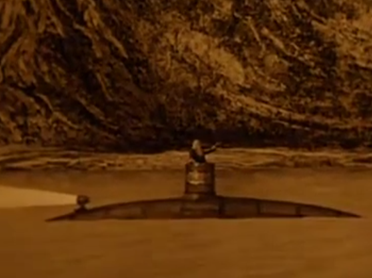
Nemo travelling out on another extraordinary voyage.
The kids salvage from the crashed airship building a new flying machine, which one of them use to go after Nemo. At the same time a group of pirates approach the island. A woman captured by the crew (I don’t think we met her earlier but I am not certain, there are a few interchangeable young women in the story I could not name) escapes and meets up with the remaining boys on the island. Together they outsmart the pirates in various ways (such as walking behind them in a very obvious bush and stealing their guns), capture the ship, recover chests from a shark’s belly and prepare to sail home. However, they are intercepted by the nation’s war fleet, who have all been dispatched (along with the press) to both recover them and to try to find the formula for fireproof gas.
The end twist: there was no such formula. It was all a confidence trick and the airship was just a hydrogen filled balloon without a working steam engine. As shareholders batter down the door, Finday sneaks out a secret door to start a new life in America. All the main characters are on the same train and we see no one has changed and learnt anything. The End.
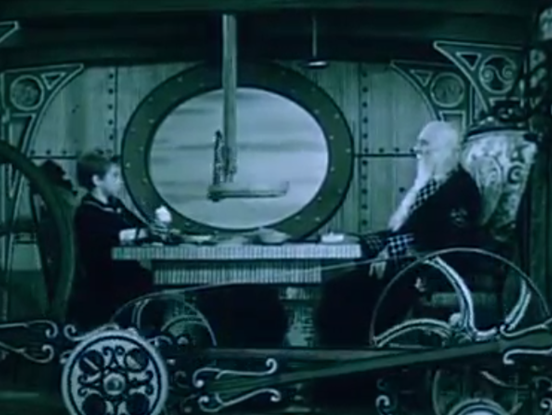
Lunch with Captain Nemo aboard the Nautilus
This plot synopsis may seem a bit scattershot, but this is actually me trying to apply more sense than I saw on screen. In reality, it jumps all over the place. The whole thing is a strange mix of different modes. Sometimes it seems to be a fairytale. Sometimes a spy thriller. Sometimes a sharp satire. Sometimes a broad comedy.
One odd thing is that, more than anything else, it seems to be more concerned with nature than people. As well, lots of footage of actual animals, stop motion and cartoon animals regularly appear throughout the story.
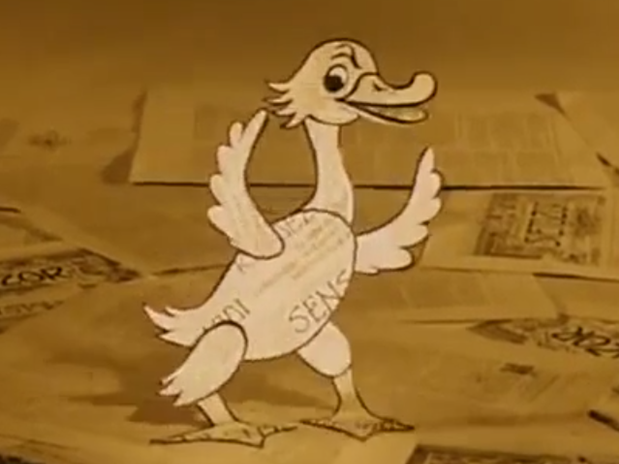
“A journalist must have fantasy”, apparently that means newspapers that turn into ducks
It is a film that I would say is a curiousity but also not one I would recommend. It has a certain quality but I spent more time being confused and bored than intrigued.
Three Stars
Herostratus
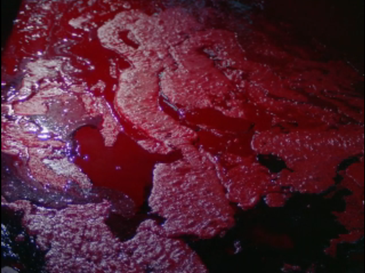
The first of the strange collage of opening shots, which set the tone for the rest of the film
This may seem a bit odd for a British film to be seen as “World Cinema” and it is a rarity but they do seem to make exceptions for acclaimed and award-winning films, maybe about once a year. It is more that it is a place in the schedule to show films that are not the usual British and American crowd-pleasers.
It should perhaps be no surprise that, whilst the previous film had a kind of fragmented narrative, Herostratus barely has a story at all. Essentially, it is about Max (aspiring poet, actual layabout) who hires the top marketing expert, Farson, in the country to promote his upcoming suicide. It seems to be more a meditation on the current times, with large parts of it told through old footage and surrealism, ostensibly Max’s thoughts as he lays on his bed. What we learn along with him, is that, in the modern world, everything can be sold, fame is fleeting and generally that most people are not very nice.
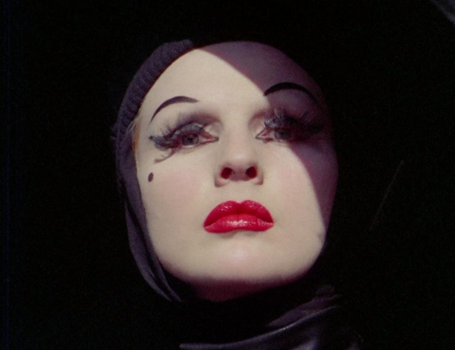
A mysterious figure who repeats. Possibly the grim reaper?
It actually took me a while to find the title reference as he is not listed in recent the Encyclopaedia Britannica or the Oxford Classical Dictionary, nor does he have a library card entry. Thankfully old reliable Lemprière to the rescue:
Eratostratus [variant spellings: Herostratus, Erostratus], an Ephesian who burnt the famous temple of Diana….Erastostratus did this villainy merely to eternize his name by so uncommon an action.
This perfectly reflects the themes of the film, as Max struggles so much to gain the fame and notoriety he clearly desires, even if it means sacrificing his life to become a sellable commodity.
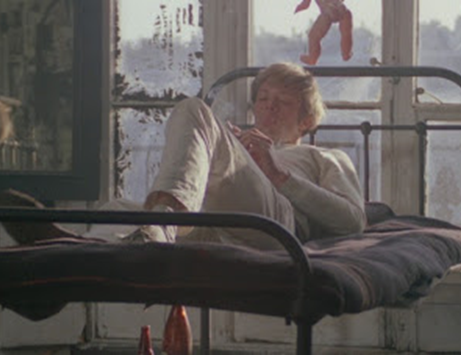
Max spends a lot of time laying about. Unfortunately we have to watch it.
This film definitely has flaws, the biggest being the combination of experimental sections and a two and half hour run time. This is a similar length to Patton but that, at least, like Tolstoy, has nice bits of war to spice things up, not a third clip of Allen Ginsberg at the Royal Albert Hall or another naked woman with lights projected on her buttocks.
It also seems to be frustratingly inconsistent in its mode of satire. At times it is so didactic it would make Pravda blush. At others I only have the vaguest notion what Don Levy is getting at. I suppose it is part of the experimentation but it is more like an optician getting you to regularly refocus your eyes. You may be able to see near and far fine, but the experience is irritating.
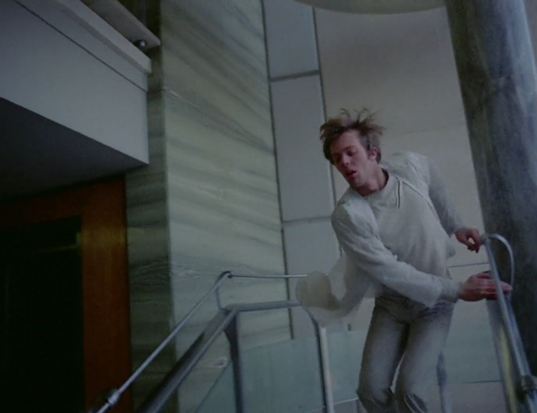
So, whilst I usually appreciate someone coming up to bat and taking their swing, I do not believe it is a film I would actively recommend anyone seeing. Too long, without enough within it, and what is there I feel like I have seen already done better elsewhere.
Two Stars
World in Action

You may think with these ratings that I am disappointed with the World Cinema slot now. That is not the case. As I stated before, I would always rather they tried things than not. And these films, although they may not be as original as either want to believe they are, are still very different to what else has been on the channel or what you will see at your local picture house of a weekend.
That in and of itself justifies the channel’s existence. Long may its strangeness continue.
[New to the Journey? Read this for a brief introduction!]




I can understand Westerns not being to your taste, but I will say that High Chapparal is definitely about as good as a Western show gets. It's the first time I've seen Indians played by… Indians speaking what I believe is actually Apache. It's filmed on location in Tucson rather than on a back lot or the Vasquez rocks. It's got a nice big cast. Mexicans are played by Mexicans (or at least some kind of Hispanics).
Bonanza or Gunsmoke, it's not.
That is fair and why I imagine it is on BBC2, it is designed not to show the kind of programmes that you would see on the main two channels. For me though, the racial politics are only a small facet of what I don't enjoy about Westerns.
It is the same as if the football games stopped being overwhelmingly white-men. Yes I do have questions about the choice. But the biggest reason for me not watching is I find football boring.